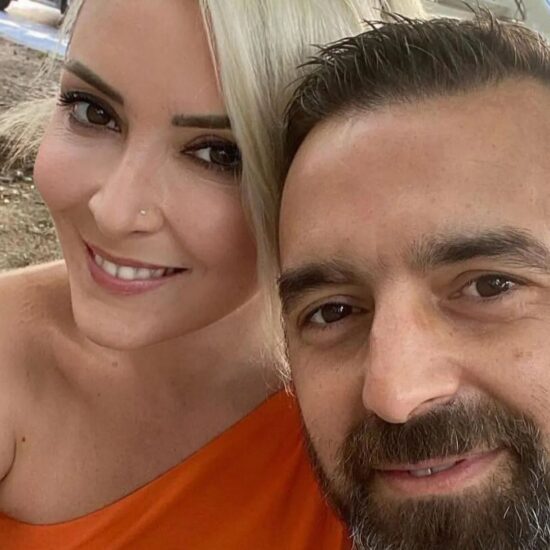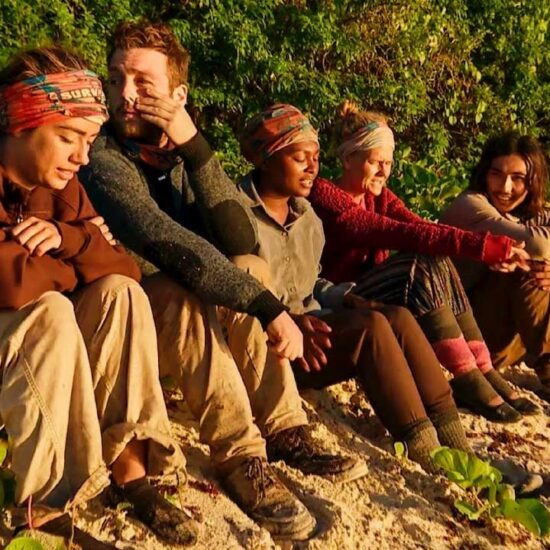Brand, niche, Klout Score, impressions, presence, following: those were the buzzwords bandied about by experts at the 10th annual Film Independent Forum held October 24-26 at the DGA in Los Angeles. “Break Through the Noise” was the title of the conference, and to do just that, upon registration each attendee was handed a heavy book replete with professional contacts, foundations and a compendium of case studies compiled from previous forums.
Despite an opening night narrative film (Nightcrawler), the last day of the Forum consisted of several panels and lectures geared to documentary filmmakers.
The day started with a memorable and highly amusing keynote speech delivered by Tim League, founder and CEO of Drafthouse Films and Fantastic Fest. Prefacing his lecture with the cautionary words that nearly “all distributors are nearly criminal in their relationship with filmmakers” and “it’s now a wild, wild west time in distribution” with mode and methods constantly changing, League strongly emphasized the importance of beginning with the end in mind. “Figure out who your audience is before you make your movie,” he urged, as only a small fraction of one percent of the 50,000 movies made every year make any money.
League also emphasized branding: “Think of yourself as a brand. Work hard and constantly to develop your brand and your community. It will come in very handy when you need to raise money and distribute. Try to engage in social media on lots of different platforms. Have a Twitter campaign; it’s a great funnel to gain a social media presence. Exploit any opportunity to gain social media followers.”
Building up a Klout Score (an aggregate of Facebook and Twitter followers) was of paramount importance to League. This can be enhanced by posting strong content and encouraging real conversations. League highlighted the unusual promotion of the documentary A Band Called Death, which entailed a Tumblr page, created three months prior to the release of the film and which featured 150 unknown “dad bands,” including photos, MP3s and essays by their sons and daughters. This strategy generated lots of editorial and press interest. “We found an interesting story and created lots of sharable social media around it in a tangible way,” League said. “The documentary space is unique in that you can find opportunities to do that.”
Given his inside track on film distribution, League imparted very potent advice: “Get a sales agent! All distributors are borderline criminals, and if they sense weakness, unpreparedness and ignorance, they will exploit that. You run the risk of getting into something that you don’t understand, and the 10 percent [for the sales agent] is worth it in terms of access, credibility and safety, because without a sales agent, odds are that you will be extremely violated.”

Tim League of Drafthouse Films delivering the keynote address at the 2014 Film Indepedendent Forum. Photo: Amanda Edwards/WireImage
League also stressed the willingness to experiment and be open to new concepts, suggesting Vimeo (as a transactional space for a one-click purchase) and CreateSpace (which offers DVD burn-on-demand or Amazon Instant Video) as new methods for distribution and self-promotion. In the case of Joshua Oppenheimer’s The Act of Killing, Drafthouse offered free bundles (trailer and exclusives, PDFs, calls to action) on BitTorrent, resulting in 3.5 million downloads worldwide, 51,000 impressions on iTunes, and 52,000 new email addresses. “There’s an inherent value in every email address you get, as you can use them to promote the next film,” League explained. “As companies are spending a lot of money to continue transacting with people in the online space, as a filmmaker you need to to keep pace with what is happening in the online industry.”
League emphasized that all filmmakers, with or without a distributor, should become experts at PR and marketing. He stressed the importance of early, active and constant audience engagement, which can require thousands of hours of works over years. In the case of Indie Game: The Movie, in a period of two years, filmmakers James Swirsky and Lisanne Pajot generated over 10,000 emails, 14,000 Tweets, 184 blog posts and 51 Kickstarter updates.
“All distributors, myself included, are just making it up as we go along,” League concluded. “This is a rapidly changing landscape; young people are engaging in content very differently than old geezers like myself.”
At the lunch that followed the keynote address, attendees engaged in informal roundtable chats with experts. John Cardellino of the Sundance Documentary Film Program (DFP) was there to inspire and guide prospective grant applicants to the Sundance Documentary Fund. The DFP has a biannual global open call for submissions of grant proposals. The grants range between $20,000-$50,000 and are awarded to films at different stages: development, production and post-production.

Luncheon at the Film Independent Fourm. Photo: Amanda Edwards/Wire Image
Cardellino conceded, “You can send in just an idea, and in the past we have granted films in early development, but competition is stiff. We get over 800 applicants per round [Spring and Fall], of which only 20 to 30 get grants.”
The criteria for assessing a submission are story, access to story, the storyteller and the team. “In your director’s statement, explain why this story is so important and why you should be the storyteller,” Cardellino explained. “The funder will have questions about the characters, so explain the nuts and bolts of your story. Consider what is going to best represent you as an artist and why you are the best person to tell the story.”
The visual sample of the director’s previous work is very important, but the DFP does consider filmmakers at any stage of their career, having given grants to both first-time directors and established filmmakers such as Frederick Wiseman. In fact, Cardellino emphasized, “Don’t be afraid to say that this will be your first feature-length documentary; people like to identify new talent. We are constantly on the lookout for new independent voices.”
Perhaps the biggest mistake applicants make is over-sharing the work sample. “Do not send in a long assembly,” Cardellino recommended.
Though highly competitive, being awarded a grant does not mean a guaranteed entry into the Sundance Film Festival. “Last year 40 grantees applied but only 12 of those got into the festival,” Cardellino said. “We respect the integrity of programming of the festival, which is separate from the film program.”
However, grantees are eligible for a number of artistic support opportunities and mentorship programs. Most coveted among these are invitations to the prestigious Sundance Creative Labs, which, for documentaries, include Edit and Story and Creative Producing (held at the Sundance Resort), as well as Music and Sound Design (held at Skywalker Sound). At the labs, filmmakers have direct access to a “documentary A-team,” comprised of producers, directors, editors and composers, to assist them in shaping and finishing their film.
Given the rather daunting statistics of one in 40 hopefuls obtaining a grant, the DFP does encourage repeat applicants. “We strongly recommend that you apply again,” Cardellino advises. “We do tell filmmakers to explore their idea further and to keep us in mind in the future. The average documentary takes three to five years of your life to make. Don’t think of it as a capital investment but as an artistic investment. The reality is that when it comes to any documentary success story, it is not just supported by the Sundance Documentary Program alone. Filmmakers are getting used to the practice of cobbling together grants. It’s a very trying process, but don’t give up. “
After lunch, distribution guru Peter Broderick, president of Paradigm Consulting, gave an enlightening speech entitled “Empowered by Your Audience.“ The lessons imparted were backed with concrete examples of successful strategies employed by a variety of films.

Peter Broderick addressing the audience at the Film Indepdendent Forum. Photo: Araya Diaz/Wire Image
“Start thinking about your audience the next time you think about your next film” he urged the attendees. “Create great content. Have a great online presence. Have a huge Facebook presence.”
That said, Broderick stressed that you “need names and email addresses, not just ‘likes’ on Facebook. Start building an audience early, using your mailing list and your team’s mailing list. Keep those people engaged with weekly newsletters.”
Even more important, “Make it personal when you are trying to build your audience.” Broderick continued. “People buy things from people. Don’t have everything on your website in third-person ‘press releasese.’ Write in the first person. Don’t have info@_____ for your contact email. People want to write to a name. What can you send people along the way that they actually want [such as stills or music], rather than just an update on your film?”
This audience can also be used purposefully for regular feedback on scenes, teasers, trailers, music and, ultimately, test screenings. The team behind Burn reached out to their audience during production, using their email list as a test-screening audience.
“I find most filmmakers don’t do enough test screenings, and I strongly recommend them,” Broderick added, citing that Lee Fulkerson, the director behind Forks Over Knives, did over 20 test screenings of his film.
“Do not underestimate the power of free,” Broderick added. “When Stacy Peralta wanted to build an audience for Bones Brigade, he offered free downloads of a previous film and within a few weeks he had 46,000 email addresses.” Similarly, the team behind Food Matters made their second film, Hungry for Change, available for free for 10 days. Over 450,000 people watched it for free and in those two weeks they sold $10 million in DVDs and recipe books. At present, the filmmakers’ mailing list exceeds 780,000.
Broderick also revealed that “the most important reason to do to crowd-funding is to build your audience for your film. Fundraising is secondary.”
Broderick also encouraged his audience to “Make a brand for yourself! The audience is not subject-specific.” Gary Hustwit (director of the design trilogy Helvetica, Objectified, Urbanized) made novel use of his fans: Finding himself stranded in Amsterdam with maxed-out credit cards, he relied on his extensive Twitter following to sell unique items, and in an hour he earned enough to pay for a hotel room. The auteur approach was also used successfully by Stacy Peralta in building support for Bones Brigade, selling one-of-a-kind skate boards, surf boards and T shirts on his website. “It’s not just the quantity of your fans but the quality that counts,” Broderick maintained. “Try to cultivate ardent supporters.”
Broderick concluded by instilling a final piece of advice: “You need to think about your goals: maximizing revenue, maximizing your audience and increasing social impact.”
Clearly, for a documentary to be successful nowadays, you cannot just rely on making an engaging film, but also have to exploit social media to its fullest potential. And you need to devote yourself to constantly marketing your film, from pre-production until well after its completion.
Darianna Cardilli is a Los Angeles-based documentary filmmaker and editor. Her work has aired on Bravo, A&E, AMC and the History Channel. Her articles have been published in Documentary, Dox and VivilCinema. She can be reached through www.darianna.com.














